You will need: Cotton fabric from the outer and lining in a high thread count, high quality cotton, with minimal shrink (less than 5%) or pre-shrunk at 60% before use. 100% cotton twill sateen is ideal for the lining, the kind you line curtains with. 5 - 6mm elastic (6 or 8 cord woven is ideal) - 2 x 20 cm for ear elastics or 1 x 60 cm for head straps Tools: Thread Rouleaux maker or safety pin to thread the elastic Silcone or other type of toggle Scissors Pins
Construction is ever so simple but to help you along I videoed this quick tutorial which talks you through how to use my pattern to make a face covering with / without a filter pocket and with either ear elastics or head straps depending on your preference and length of wearing. Long term use with ear elastics can cause skin irritation and unless you specifically know you will be wearing for short periods or to go to the hair dresser I would strongly advice the head straps for secure fit and long term comfort! Good luck and let me know how you get on! Why not share your face coverings in my Facebook group Kernow Sewcial? We're a lovely supportive and buzzy bunch of sewing enthusiasts.... come and join us! Don't forget to tag me @Starttostitch if you're an insta fan like me :) Oh and below the tutorial is the small print on face coverings and recommendations for care as well as suppliers for components. The small print:
A cloth face covering is not PPE. They are not intended for the personal protection of the wearer – they are designed to prevent people who have COVID-19, but might not know it, from spreading it to others. In simple terms, if I wear one I protect you, if you wear one you protect me. Face coverings are not a substitute for social distancing or washing your hands regularly – and they need to complement these behaviours. Wash your hands or use hand sanitiser before putting it on and after taking it off. Try not to touch your face, or the face covering while you are wearing it. Once removed, make sure you clean any surfaces the face covering has touched. Regular household cleaner works fine. After wearing them store your worn face covering in a plastic bag until you have an opportunity to wash it. The elastic in this face covering design can be repositioned to make it comfortable for you. You may find that the top elastic sits best over the crown of your head (or hooked above a ponytail if you have one) with the lower elastic sitting around the back of your neck. To help with fitting on smaller heads, I suggest the use of a toggle which on my face coverings has been attached to the top elastic so that the mask can be tightened securely. I suggest that you remove this before washing to save potential clogging of your washing machine... You can buy theme here All you need to remove and replace the toggle is a hair pin and a more in depth demo can be found here Detailed information on the care of cloth face coverings can be found at the American Center for Disease Control here
1 Comment
Well, I have to say this lockdown has not panned out the way I intended! 6 weeks ago I was loading up the car with DIY materials to get jobs done in the house, looking over my UFO pile and going through my stash to match patterns to make. But 4 weeks ago, having volunteered to co-ordinate the Cornwall effort for the nationwide For the Love of Scrubs group - an initiative set up by the amazing nurse Ashleigh Lindsell who had a vision for sewists to help her and her colleagues make scrubs for the NHS, I set up a local facebook group called Cornwall Scrubs with Sam Lanyon of CoVisor. The aim was to attempt (I now see rather ambitiously) a Cornwall wide effort to plug the gap in supply for Scrubs for our NHS and other Health Care Workers in the county who struggle I think more than most due to our widely spread population and low economy and financial support..
When we began we all thought, somewhat naively perhaps, that if we made 200 sets of scrubs, we would have done a good thing. But from the moment the group went live, we were overwhelmed in every sense of the word. We spent the first 5 days solidly fielding messages. our phones pinged off the hook. The support and the suggestions came flooding in, everyone wanting to help, or donate, or find out how to get involved... Care-workers requesting, hospitals requesting, GP's, community nurses, the list went on. W H A T. A. R O L L E R C O A S T E R ! ! Pretty quickly we knew we needed a system to organise all of this. We had a major hiccup on day 3 when the volunteer who had offered to collate all the sewing volunteers for us just ran for the hills in the overwhelm, and I don't blame her because we were ALL wondering what on earth we'd got ourselves in to. It was a difficult 24 hours as so many people got frustrated with us not having a plan set up right there and then but it turned out to be a blessing in disguise because we ended up with an incredible volunteer building a bespoke database solution which now tracks pipeline against production and helps us match to orders as well as the all important stuff of keeping our volunteers data totally GDPR compliant. Jen - you are completely amazing and we are so grateful. It also became apparent quite soon that we needed a secure and organised way to log the requests for scrubs. As registering volunteers was a priority at the time Adele stepped up to the task, set up our email inbox and kept a spreadsheet of all the requested items. We started to realise after a week that our initial aim was way off-beam as we had over 800 items requested and it was raising daily... so it was a relief to be able to get the website to be able to take these request automatically - another bit of technical wizardry from Jen that I will never understand!
Speaking of teams - a key part of our pipeline was to put our registered volunteers into teams with allocated co-ordinators so we could start to manage the flow of messages through a cascade system of communication, create little micro groups and get things made to the right spec as quickly as possible. In among that we built in a first round of quality control ( really important for garments being made for a hospital or health care setting ) and a second round of QC takes place when completed items are back at the hub. There was a HUGE amount of work that went into pulling these teams together and managing the roll out of that system and special thanks go to Rosy and Kathy for their incredible work. It was literally days and days and it is, like the other bits, a completely crucial cog in the machinery. We have had so many request to volunteer that even with the brilliant system of teams in each region we needed to pause on taking new ones. We simply couldn't cope with the relentless demand in messages and questions and we needed to get the pipeline up and working before we could integrate new ones! And along with the teams in the community we built a team of professional sewists with industrial capability. Some have brilliant cutting facilities, others have volunteered their furloughed machinists to use the factory floor, others are wiling to hand cut the odd sizes that won't work on the professional cutting systems and together this strategy is helping us to get to the point where we can cut and manufacture around 400 pieces in an overlapping two week cycle... For only 4 weeks in, to be at a point where we can even imagine this, is rather splendid! There are 27 team leaders working with Rosy and the admin team, and they're all fabulous. Together our community teams and our professionals, are making miracles happen in the land of scrubs. We dearly wish we could say yes to everyone that has come forward, but there simply isn't enough of the funded materials to go around and keep everyone happy ALL of the time, and so those unable to get on the active list have been beavering away making caps and bags out of donated, self funded and re-purposed materials, and crucially making self-funded scrubs to our very particular spec from the kits being made up by the three Cornish sewing businesses who have been discounting them for us - Truro Fabrics, Sew and Fabric and Threads. Our group now has over 2000 members with new people joining us every day and a constant stream of messages and questions. We have worked extremely hard to make sure that everything in the group is clearly communicated and easily found but despite that the enquiries have flowed pretty thick and fast. Tammy is our admin in charge of the group, and she has worked many hours a day replying to each and every message and fielding enquiries so that we can get on with our individual responsibilities. Sadly, at times, this has involved some messages that perhaps didn't translate so well in the written word ( to put it nicely ) and this is draining when we are all breaking ourselves to get the job done. It's sad that people feel they have to be unkind to get their point across. Thankfully this is the absolute minority, but a great shame none the less, as we are ALL volunteers giving our time freely to make this happen. When you set up an initiative like this there is a LOT of stuff to consider, it's not just the comm's and the funding, but it's things like risk assessing and policy, writing things up and tracking where you're at and what you've done. Emma came forward with a huge amount of experience in project management and just flew at all these things that needed to be done, policies and the like. She has been wonderful working late into the night around her other work and her son to get these bits done for us. And let's not forget the financial processes and just day to day admin of the thing! Karen has been our star player acting as our secretary running errands, sending thank you notes, and just generally picking up the sticks we drop as we frantically try to keep on top of our own workload to keep the wheels on the scrubs machine turning. There are so many considerations when trying to manufacture at this scale, not least of all the need for a robust and fool proof pattern. All of my professional experience has been bespoke and one-off makes for bridal wear and costume mainly. Nearly every pattern I have ever drafted has used a couture technique called draping, perfectly suited to creating bespoke garments for individual clients. My knowledge of the manufacturing industry goes as far as bridal really only, and although I know my way around a pattern and can draft simple shapes using flat cutting techniques, my skills and training as a designer have far outweighed my skills as a flat patterncutter. Professional pattern cutters have an acute eye for detail and truly understand the science of drafting as well as construction and this is where wonderful Helen came in. Helen's professional experience as a cutter has been invaluable in this process as she was able to bring together the mish mash of open source patterns we had found into one slick and multi-size unisex pattern, fixing errors and producing a super step by step guide to help our sewists. Her partner Will helped her with the CAD element and between them they have really helped us ensure that our production is high spec and consistent.
All of this work needs funds, and we are thrilled that in these 4 (how is it only 4!) short weeks we have raised over £20,000 to fund much needed materials, threads and other haberdashery. It is a phenomenal sum and I think a huge part of our success there is thanks to the super duper company who are volunteering their expertise to help raise our profile through social media The Social Giraffe. They have diligently updated our Facebook, Instagram and Twitter feeds and shouted out loud about our donors and volunteers and these outlets have become a real celebration of all things Cornwall Scrubs. Along the way we have met a number of significant challenges which have delayed our ambitions, and sometimes plunged us into total despair. This whole project has been so much bigger than we ever imagined, on every level, and the man power required to make it happen is off. The. Scale. As a team of admins we have pulled a relentless schedule of very very long hours and the last 4 weeks have gone by in a total blur. I am frequently still replying to messages or calculating yardages and cutting schedules until gone one am and I will admit at times it has all felt way too much. I am writing this at near midnight as its the first chance I have had, and in the middle of scrubs and homeschooling and day to day life, I am still trying to keep both of my businesses alive and kicking. In combination with all the other emotions that we are all feeling during this strange time, it has on occasion really got the better of me... throw a teething toddler into the mix with the late nights and it really is a heady combination and a recipe for some very low moments!
There is one other person though who, for me, is the absolute unsung hero of this. When I have had relentless days of zooms and messages and admin and delivering and haven't laid eyes on my kids from 7 am to the following day, he has held the fort. He has cooked nearly every meal, done nearly every bed time, managed most of the homeschooling. He has built dens. he put up with most of our Easter weekend being consumed by the Scrubs effort, He has made tea. He has poured gin, a LOT of gin. He has changed nappies, put the baby down for naps, and built garden furniture while she does. He has done the laundry, and the cleaning. When I've been sobbing in the kitchen from the enormity of the task ahead of us, he has told me I can do it, and it is needed, and that we all must do our part. He is my absolute rock and the best Daddy ever to our beautiful bonnie and utterly exhausting girls. He has even videoed a 'how to make your scrubs' tutorial for me (you can watch it here) when I'm quite certain he never wants to hear the word scrubs ever again! I can't blame him. Thank you Christo, thank you.
Cornwall Scrubbers, you are family! It all felt impossible at the start, some times it still does, but we are all in this together.
Let's have a blooming great big party when this whole thing is over! Promise?! |
AuthorSewing. pattern cutting, teaching, tea and Jelly Babies! Categories
All
Archives
December 2023
|

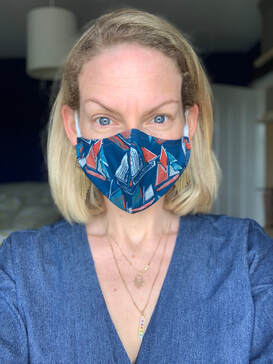

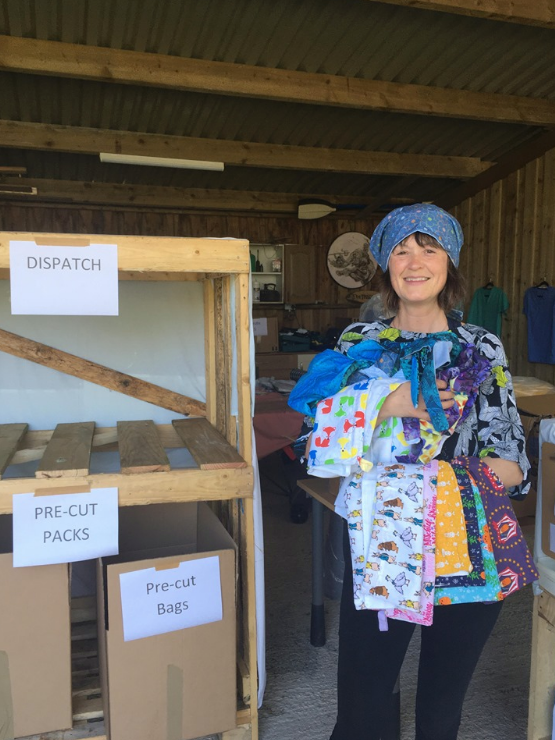
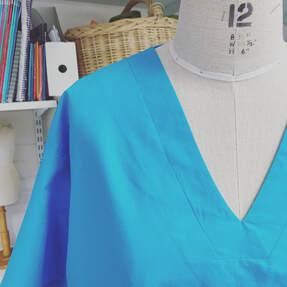
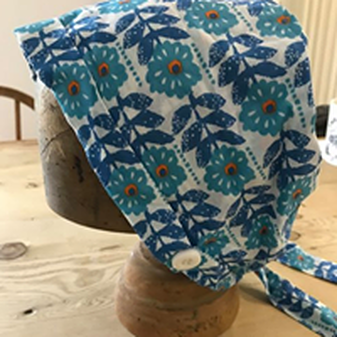
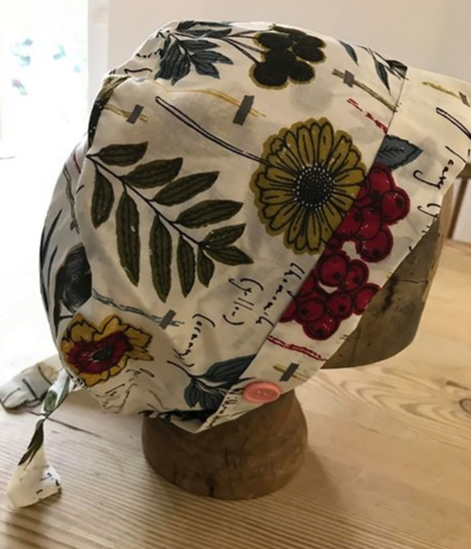
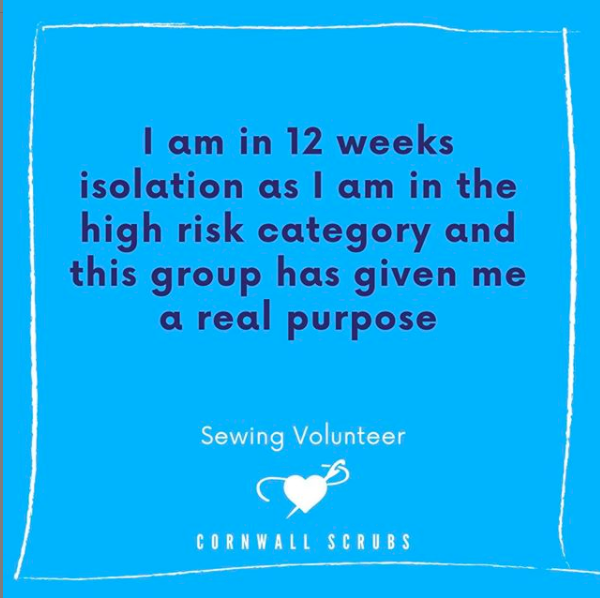
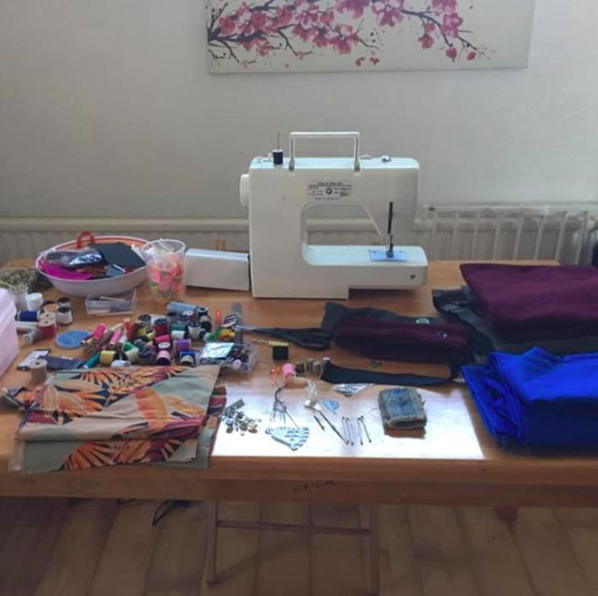
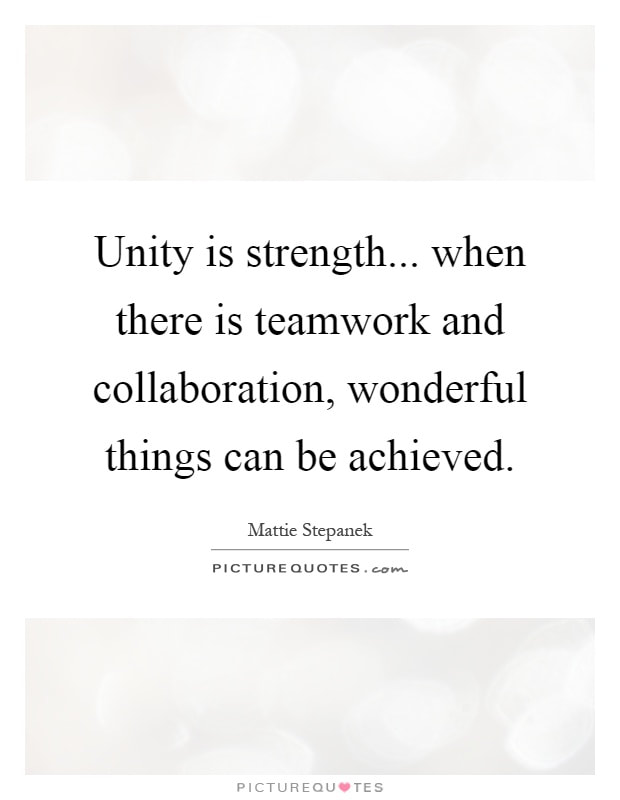
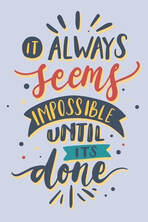
 RSS Feed
RSS Feed